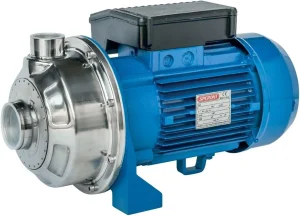Choosing a high-efficiency pump requires a systematic evaluation of various technical factors. Key considerations include fluid characteristics, required flow rates, and total dynamic head (TDH). Energy efficiency ratings, particularly the Pump Energy Index (PEI), offer critical insights for comparison. Additionally, compatibility with existing systems and maintenance needs can considerably influence long-term costs. Understanding these elements is essential for making an informed decision that optimizes performance and minimizes expenses. However, the selection process entails further complexities that warrant exploration.
Key Takeaways
- Assess the application requirements to ensure the pump matches fluid characteristics and operational conditions for optimal performance.
- Calculate the Total Dynamic Head (TDH) to select a pump that efficiently meets flow requirements and overcomes system pressure losses.
- Review energy efficiency ratings, focusing on the Pump Energy Index (PEI) to identify models with lower energy consumption for long-term savings.
- Check compatibility with existing infrastructure to avoid costly modifications and ensure seamless integration with current systems.
- Investigate maintenance and support options, as reliable service and easy access to parts can significantly reduce long-term operating costs.
Understanding Application Requirements and System Needs
When learning how to choose a high-efficiency pump, the first step is to thoroughly evaluate your application requirements. This involves understanding the fluid characteristics, such as viscosity and temperature, as well as determining the required flow rates. Accurate assessment of these factors ensures the pump can handle operational demands efficiently. Additionally, calculating the Total Dynamic Head (TDH) is critical to confirm the pump can overcome system pressure losses and deliver optimal performance within your setup.
Evaluating Energy Efficiency and System Compatibility
After defining system needs, reviewing energy efficiency ratings—especially the Pump Energy Index (PEI)—is essential for long-term cost savings. Selecting a pump with a favorable PEI rating means lower energy consumption and reduced operating expenses over time. Alongside this, it’s important to check the pump’s compatibility with your existing infrastructure. Ensuring a seamless fit prevents costly retrofits or adjustments, helping maintain efficiency while simplifying installation and operation.
Considering Maintenance and Manufacturer Support
Finally, factoring in maintenance requirements and manufacturer support plays a key role in sustaining pump reliability and longevity. Pumps that are easy to maintain and have accessible replacement parts reduce downtime and lower ongoing costs. Additionally, choosing manufacturers who offer strong customer service, warranties, and technical support can provide peace of mind and protect your investment. Following this structured approach guides you in selecting a pump that balances efficiency, cost-effectiveness, and durability.
Frequently Asked Questions
What Are the Benefits of High-Efficiency Pumps Over Standard Pumps?
High-efficiency pumps offer superior energy savings, reduced operational costs, and enhanced performance compared to standard pumps. Their advanced design minimizes energy waste, leading to lower environmental impact and increased reliability in various applications, promoting long-term sustainability.
How Can I Determine the Right Pump Size for My Application?
To determine the right pump size for an application, one must assess the required flow rate, total dynamic head, and system characteristics. Accurate calculations guarantee peak performance, efficiency, and longevity of the pumping system.
Are There Specific Brands Known for High-Efficiency Pumps?
Numerous brands specialize in high-efficiency pumps, including Grundfos, Wilo, and Xylem. Each offers unique features, catering to various applications. Evaluating performance metrics and energy ratings aids in selecting the most suitable option for specific needs.
What Maintenance Is Required for High-Efficiency Pumps?
Maintenance for high-efficiency pumps includes regular inspections, lubrication of moving parts, monitoring seals and bearings for wear, and ensuring ideal alignment. These practices enhance performance, prolong lifespan, and ultimately contribute to cost-effective operation and reliability.
How Do I Calculate Potential Energy Savings From a High-Efficiency Pump?
To calculate potential energy savings from a high-efficiency pump, one must assess the pump’s flow rate, power consumption, and operational hours. Comparing these metrics against existing pumps reveals significant savings over time, justifying the investment.
Conclusion
To summarize, selecting a high-efficiency pump to minimize long-term operating costs necessitates a thorough evaluation of application requirements, fluid characteristics, and flow rates. Critical analysis of the total dynamic head (TDH) and energy efficiency ratings, particularly the Pump Energy Index (PEI), is crucial. Additionally, compatibility with existing systems and maintenance considerations play an essential role in operational efficiency. By prioritizing manufacturer support and warranty options, one can guarantee reliability and cost-effectiveness in pump performance.
You May Also Like:
